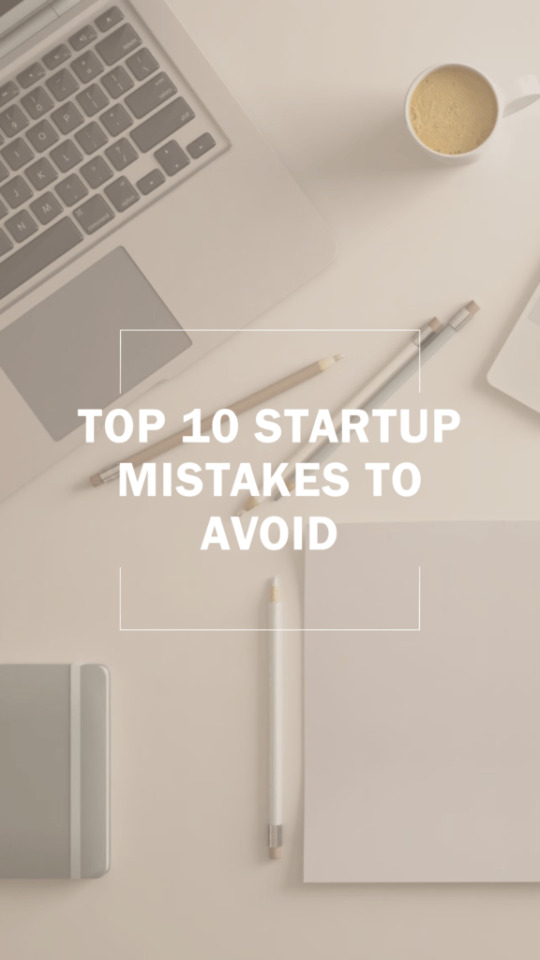#Health Data Monetization
Explore tagged Tumblr posts
Text
Vyvo Smart Chain Announces NFT Expansion For Apple Watch At Web Summit

An important update to Vyvo Smart Chain's (VSC) patented Data Non-Fungible Token (Data-NFT) has been made available, enabling connection with Apple Watch via the Apple HealthKit. VSC is a HealthFi ecosystem. This update represents a calculated step forward for the HealthFi industry by allowing users of the Apple Watch to actively engage in Data Mining and earn $VSC through the use of a Data-NFT.
VSC announced its expansion during the Web Summit's Growth Startup Program in Lisbon, highlighting its dedication to innovation and upending the health and wellness industry. The Growth Startup Program demonstrates VSC's commitment to developing its ecosystem by giving businesses access to crucial resources and assistance for quick company scaling.
Utilizing human biometrics that are gathered by sensors to create health data from wearable IoT devices is known as data mining on the Vyvo Smart Chain. By decentralizing control over data ownership, privacy, and the capacity to monetize their health data, VSC seeks to empower Data Owners.
Fabio Galdi, Co-Founder and CEO of VSC, highlighted the importance of this technological improvement to the patented Data-NFT and how it places VSC at the forefront of HealthFi. "Our goal has always been to use blockchain to expand the boundaries of technology," he said. This technological advancement for our exclusive Data-NFT opens up our environment to a whole new user base.
Read More - https://bit.ly/47E4ToL
#Vyvo Smart Chain#Health Data Monetization#VSC-Compatible Application (dApp)#Data Non-Fungible Token (Data-NFT)
0 notes
Text
tuesday again 8/6/2024
people mad at a video game for being woke, i'm mad at it for not being woke enough. so it goes.
also i wrote a yeehawgust fic
listening
another addition to the "SOMEBODY COME FUCK THIS (GAY)" playlist, thank u charli xcx and billie eilish
-
reading
im still really annoyed with Retraction Watch for platforming a terf last year and then not doing any sort of sockpuppet damage control in the comments. since they got acquired by crossref they've done way less guest editorials. not to be all "stick to sports!" but stick to sports, retraction watch.
they did introduce me to this substack series i will be following with great interest about the rise and fall of hindawi. wiley acquired a paper mill a few years back, bc they seemingly did zero diligence, and then blithely ignored the problem for two years before being forced to do the single largest retraction of papers in scientific publishing history, somewhere above ten thousand articles because it is STILL ONGOING.
i do love following various retractions bc i like seeing what finally made someone go "wait a minute", and, as i have just written in a cover letter, "I studied astronomy and have held several data jobs because I’m fascinated with how and why systems work and fail..."
-
watching
my best friend has decided while i'm at her home in the evenings eating her food and bothering her children (for my mental health, it is very important i am fed tiny bits of mushed up banana by hand by her one-year-old), our new project is watching all the xmen movies. i have no particular desire to do this or special affinity for the xmen, and i would like to keep eating very good texmex and bothering her children (for my mental health, it is very important i play hot wheels with the five-year-old). this sounds so super bitchy of me but it's hard to convey that these are essentially on for background noise.
saw the first two. the two things i know about them are that hugh jackman is in them and they're at the statue of liberty in one

-
playing

an ideologically baffling little environmental game free in the epic store this week, LumberJack. this is on PC and Switch for $13, which is far more money than the playtime anyone can get out of this game. tiny tiny tiny little Spain-headquartered studio without an active website, it looks like one guy hired out to make this and two more games and then went back to single-dev projects. i can respect that!
steam reviewers are mad at this game for being woke, and i'm mad at it for being woke in a very strange way. your one mechanic, as a bear, is swinging a big axe to remove cars and trailer offices and portapotties and various garbage from the landscape.
i wish the movement and look controls are inverted, and i wish they weren't, or at least had an option to make them normal. i know Why this isn't a mobile game (can't monetize something with twoish hours of gameplay and twenty levels) but it's a very straightforward and simple game that would translate very well to mobile. much like donut county.
now for being picky about the political mindset of the developers: as much fun as it is to be a bear swinging an axe around, lumberjacks are not the people i associate with wild preservation movements.

saving the land and turning it back into pristine and perfect land for wild animals in this game looks like erasing every hint of human activity from a site and turning it into sheer recreational use. many levels are heavily polluted, but some can definitely be read as recycling centers. im confused by the erasing every hint of humans in early levels, and then this level where you break down a radio station, slap the host with your axe, and she turns into a park ranger who starts gardening and taking care of chickens?


i don't think that removing all the traces of people from the landscape will magically fix everything, nor do i think simply being in unspoiled wilderness will magically fix me.

there's a golfing level where you whack bombs into various small buildings. i think golfing to save the environment is a strange choice to make for designing a game.

i also briefly thought this bird in every level was an extinct ivory-billed woodpecker, which was a little alarming bc there are some real nutjobs out there with very strong beliefs about this bird and government overreach and how much the government is lying to you about the extinctness of various animals.
i stopped playing about halfway through bc i was not having fun and found the underlying environmental message a little confused. they've managed to sell at least 10k units which is...not very good. i am not surprised this is free on epic, and i wonder what their payout for that was. would not be surprised if they negotiated a payment to their nonprofit partner ecologi as part of that.
-
making
yeehawgust fill! i have another bitchy blond babygirl!

what the fuck is the prisoner? cult 60s british spy tv. with all the surreality and anxieties about the cold war and midcentury psychological horror you could possibly want

He’d been drugged enough times to recognize the splitting migraine rapidly galloping down his neurons. “Where am I?” He fought down the taste of bile (ketamine? xylazine, by the aftertaste) and the rising panic. Oddly enough, the migraine was always worse with veterinary sedatives. One would think a mind would adapt to nearly three hundred years of irregular drugging and constant experiments. One’s body had adapted and ghoulified, but in equally unhelpful ways. The tycoon flickered, approximating an appraising blink. “This meeting has been a long time coming, hasn't it? You've come a long ways, literally and, I suspect, figuratively as well. You’re in the Free Economic Zone of New Vegas.” They’d pretended the prisons were so many different places: across the Continent, in various parts of London, up and down and all around the East Coast of these wretched States. Rarely this far west, aside from the awful escapade in the faux pre-War Western town. “What do you want?” He managed to swing his ankles off the saddle (also pre-War? Heavily used. It certainly wasn’t his, the equestrian event had always been his worst event in the pentathalon) and jolted what felt like every half-dead nerve in his half-dead body.
26 notes
·
View notes
Text
Threads, Meta's new social media app, has signed up 100 million new users less than a week since its launch last Wednesday, making it the fastest-growing app in history.
Like other social media apps, users probably barely scanned − or skipped − the terms and conditions for what information Threads can collect, share and sell about them.
Meta probably already had a lot of information about users because Threads is built upon its Instagram platform.
Start the day smarter. Get all the news you need in your inbox each morning.
So how much does Threads already know about you, and what can it do with that data? Here are a few reasons to be concerned about your privacy.
What information does Threads collect?
Social media platforms monetize user data by selling relevant ads based on your location and activity, but, along with the usual app privacy requests like browsing history and location data, Threads also asks for financial information, health and fitness data, diagnostics and a nefarious-sounding "sensitive info."
Many users have voiced concern over Threads for its 14-point list of data permissions you're granting Meta to use the app. Twitter, by comparison, has 10 of these.
"I would say it's at the outer boundaries of what's usually expected, which is to be expected from its connection to Facebook, a brand long known for being especially hungry to take in user data and commercialize it in different ways," says Dan Ackerman, the new editor-in-chief at Gizmodo, a leading technology, science and culture news publication.
Android users can toggle off some of the data requests from the app, while the Apple App Store is "more take-it-or-leave it," Ackerman said.
"It also doesn't help that there's no browser-based fully functional version of Threads right now, and so you have to use the app version," he said.
Meta declined my request for comment and clarification.
Is Threads data collection worse than Twitter?
It's not necessarily malicious, suggests Tim Bajarin, a veteran technology analyst and Chairman of the San Jose, California-based market research firm Creative Strategies. "Users should know this Threads data list is pulled directly from Instagram, and it's all tied to their advertising engine when they start to monetize Threads.
"When you sign off on financial info, for example, they're not looking at your bank statements or anything," Bajarin said.
Rather, Threads collects what you're posting about and liking, where you are, and whether you bought something through a third-party site, app or game you logged into using your connected Facebook/Instagram ID (usually to avoid creating a new password altogether).
Bajarin said users are granting Meta access for future advertising.
"Meta isn't giving you a free app out of the goodness of their heart − they're there to make money, which is mostly from advertising."
Threads can collect and save this information, and the data can also be shared with third-party services that connect to your Threads profile.
Can you deactivate Threads?
Yes, but you cannot delete it without also deleting Instagram, Bajarin said.
"Meta built (Threads) on the Instagram infrastructure, on top of the program itself, and so it would be very difficult to uninstall one and not both – at least the way it's engineered today. ... They could eventually be spun out to be completely separate apps," Bajarin said.
To deactivate (but not delete) your Threads account, Adam Mosseri − the Instagram boss who now spearheads the Threads app – says you can choose to hide your Threads profile and content, delete individual Threads posts and set your profile to private, as reported by USA TODAY contributor Jennifer Jolly.
"Threads is powered by Instagram, so right now it's just one account, but we're looking into a way to delete your Threads account separately,” he posted.
Ackerman said the fact Threads is built on Instagram is actually a boon for Meta and users, "as it's especially easy to sign up for, has no wait list, and is simple to use." But "in order to delete your Threads account after you sign up, you’ll need to delete your Instagram account, as well, which reminds me of the difficulty people had deleting their Facebook accounts in the past, and how there was a lot of fine print about what data Facebook would keep unless you jumped through extra hoops."
Is the Threads app safe?
Threads is asking for more permissions than Twitter, so it boils down to your comfort level.
Though some of the privacy permissions seem ludicrous – granting Threads access to health and activity data and other "sensitive info" on a smartphone just seems wrong – no one is forcing users to install and use Threads or any other social media app that monetizes its free platform by delivering personalized, contextual ads to you.
Threads is available in more than 100 countries, but perhaps it's no surprise it isn't available in the Europe Union just yet: Meta was forced to pay more than $400 million by EU regulators for forcing users to accept targeted ads.
Personally, I am using and enjoying Threads quite a bit but wish there was more clarity about how my data is collected and used. And I'm disappointed Meta declined to clarify things.
I select "Ask not to track" on all iPhone apps to reduce an app's visibility into my web browsing activity, and I have a virtual private network (VPN) on my computer for extra privacy, but perhaps it's true there is nothing truly free in this world – it's just up to each person to decide whether the cost is worth it.
24 notes
·
View notes
Text
I've been using Pokemon Sleep for about five weeks now. Here's some thoughts below the cut. It's a long one.
First, my opinions about the nuts and bolts of how it works. This is... mostly complaints.
- The monetization in this game is absolutely disgusting. Like just heinous. If you're the kind of person that needs to avoid stuff with microtransactions, do not install this game. I haven't given them a dime, but I've also at this point built up a strong resistance to monetization tricks. DO NOT let your kids play this game if they have a credit/debit card hooked up to their accounts.
- On the flip side, credit where due, when they say on the load screen that you can play 100% of the game without paying, this is true. You'll progress faster and with less effort if you pony up some cash, but the game gives you a decent stream of the premium currency, Diamonds, that will get you access to whatever niceties you'd like. If I wanted something that requires the premium currency to get, I haven't found myself walled behind a massive wait for the drip feed to catch up.
- The game wants roughly thirty minutes to an hour of your time a day not counting the sleep tracking. Three ten to twenty minute chunks. One in the morning to review last night's sleep data and feed Snorlax breakfast, one in the afternoon for lunch, and then one or two in the evening for dinner and switching on the sleep tracking.
- When the app tells you to put your phone on the bed for the sleep tracking, this is actually NECESSARY for how it functions. I had assumed it just uses audio to gauge if you snore or whatever (which it does), but it also uses your phone's accelerometer to determine if you're tossing and turning and by extension how deep you're sleeping. If you put it on a bedside table or something, it'll give you a readout saying you slept like an absolute fucking ROCK. If you're like me and toss and turn a lot, you can actually use this to cheese the game a little since certain Pokemon only appear when you sleep deeper and those are for me quite hard to get without this cheese. I would go so far as to actively recommend this tactic.
- You may notice that's kind of a creepy amount of data to collect and it feels kind of like inviting a stalker into your bedroom. You are correct. The app assures you that the actual sleep data does NOT get transmitted at all. I do not have anything other than their word to confirm that. I don't know if what it collects is fairly standard for other apps like it, but my assumption is yes?
- Because of how it tracks your sleep info, if you sleep with a partner in the same bed it completely skullfucks its tracking.
- If you have an even slightly older phone, the app chugs whenever you try to click anything. There's like a one-second lag on every click in the menu followed by a short load screen. Those 10-20 minute sessions would be about half as long if I had a phone with more processing speed.
Now all the above might sound damning as hell. But here's the thing. I like this app a lot actually. It's DEEPLY flawed, but let's talk about the game's mechanics, which is mostly positives:
- Right at the top, this app has improved my sleep schedule, pardon the pun, practically overnight. My new PC has told me twice now that step one to fixing most of my mental health issues is healthier sleep, which he knows is hard but you gotta try. I've been hesitant to take the meds he prescribed for that, but I heard about this app and figured gamifying sleeping on time would be a great way to get me to actually do it. Worked like a charm. The game asks what you'd like your nightly bedtime to be, and gives you rewards for maintaining it. You get these rewards if you go to sleep either 90 minutes prior to that time, or 30 minutes after. My doctor recommended 30 in each direction for consistency, but they don't send you a reminder notification until that 30 minute mark prior so partial credit I guess? I've missed that bedtime like 3 times in these last five weeks, and yeah my everything is way better.
- Looking at the Pokemon wandering my camp makes my brain make the happy juice in a way most Pokemon stuff really doesn't anymore. Like, there's no battles or anything (although you apparently can transfer to and from Pokemon Go, don't know how well that works because I don't play), so you just get a pleasant kind of domesticity most Pokemon stuff doesn't do.
- Here's the actual gameplay loop. You're researching Pokemon sleep patterns. To do this, you're using some nonsense machine that amplifies local Snorlax's natural aura of sleepiness to attract Pokemon to come sleep by it. Snorlax's are apparently the capybaras of the Pokeworld which I actually love. The more you feed Snorlax, the more powerful this sleepy aura becomes. It resets each week because you go to a new campsite with a new Snorlax. During the day, your team of Pokemon (max of... 5 for some reason instead of the default six everywhere else in this franchise?) gather berries to feed your Snorlax throughout the day in idle-game-esque timers, as well as ingredients for more complicated meals. You take the ingredients, make Snorlax meals up to three times a day (6am-noon for breakfast, noon-6pm for lunch, 6pm-6am for dinner). Each pokemon also has an ability that in some way helps you out. Then you can at any time turn on the sleep tracking, then turn it off when you wake up. After a rest of 90+ minutes has been tracked, it gives you a total of how much power that rest generated, and takes you to a minigame where you photograph the sleeping Pokemon that came to rest in your camp. The more power, the more varied the sleeping positions and the rarer the Pokemon. You can then feed them biscuits to befriend them. You get the equivalent of a Great Ball(/Biscuit) every day which on its own fills about 3/5 of a non-evolved Pokemon's friendship bar (the basic biscuit that you'll use most of the time fills 1/5), so there's always at least some progress towards making a friend. Sometimes a Pokemon is extra hungry and the first thing you feed them is worth triple, and you can also get that same multiplier as an RNG thing without warning. Once you fill up a bar, you've befriended that Pokemon and can now add it to your teams or send it to the professor for candies like you do in Pokemon Go. You are also given candies for every Pokemon you attracted even if you don't befriend them, plus "Sleep Points" based on how long you slept for that can be exchanged for items like more biscuits (for reference, a single basic biscuit is roughly 1.5 times a good night's sleep... fucking YIKES) plus "Dream Shards" for how cool the photos you took are, which are used mostly for leveling up your Pokemon and upgrading your camp.
- I love this gameplay loop actually. It feels way more like these Pokemon are my friends as opposed to wild animals I've caught.
- Leveling up and evolving take large amounts of those candies and dream shards. The candies feel like the primary gate on progression.
Overall, this is a game I like a lot despite its flaws, and the positive impact it's had on my health even in this short span is hard to understate. I wish they'd back off with the creepy monetization so I could actively recommend instead of recommend with an asterisk. But yeah that's my thoughts on this weird ass product.
12 notes
·
View notes
Text
‘Is blogging still relevant in the age of TikTok and Instagram?’
What is a blog? I believe that most of the youngsters now do not know what it is. The word blog is a combined version of the words “web” and ‘log” (Weiner 2023). A blog is like an online diary or online journal, following a blog is like getting to know someone or watching their life just like watching a television series. There are many types of blogs, like food blogs, travel blogs, lifestyles blogs, health and fitness blogs, sports blogs, fashion and beauty blogs, and others.
Back to our topic, is blogging still relevant in the age of TikTok and Instagram? I would say yes, blogging is still relevant in the age of TikTok and Instagram. Granted that most people now are using TikTok and Instagram, but according to the research (van Dijck 2013) every single day, millions of individuals interact through social media. In December 2011, 1.2 billion users worldwide, 82 percent of the world’s Internet population over age 15 logged on to a social media site, up from 6 percent in 2007 (van Dijck 2013).
Nowadays, many people still use blogs, not only self-publishers, journalists, writers, marketers, and businesspeople also using blogs. Blogs are a powerful tool for Search Engine Optimisation (SEO). Businesses can post blogs with some keywords to help them grow the flow.

The length of the content we write is one of the most important SEO variables in 2020 for ranking highly. According to Rioja (2020), if we write a blog article that we want to rank, we need to make sure we are going into as much detail as possible. If we did not write at least 1500–2000 words per post, we would not rank. The ability to post long-form content is a benefit of blogging in this situation. The Instagram caption length restriction is 2200 characters, which is roughly 338 to 440 words. Instagram posts short-form information as compared to blogging, thus we are limited in how detailed we can make our captions. Because of the word limit of social media, users do not have enough space to introduce themselves in detail, whereas in blogs, users can present themselves more comprehensively. Therefore, blogs remain an indispensable platform.
The fact that blogging is still important in the era of TikToks and Instagram is also due to the wide range of content. Text, photos, videos, graphics interchange formats, and other types of media can all be included in blogs. We are limited to choosing between posting pictures or videos on Instagram and TikTok, though. Furthermore, we are only allowed to upload ten images in each Instagram post, and videos can only be one minute in duration. We may upload the video as a reel if it lasts longer than one minute, however, only one video can be posted for each reel post. Blogging also can be a digital diary. As we mentioned before, because of the word limit, we cannot express our emotions. In the age of TikToks and Instagram, many people use blogs to record their lives, just like a diary. Furthermore, there are many ways to earn money from our blogs. Some of the most popular ways to monetise include offering content by subscription, display advertisement, affiliate marketing, sponsorship, online courses, and eBooks (Shwake 2023). These monetised ways are quite easy compared to earning money on Instagram and TikToks. Instagrammers and TikTokers earn money in a few ways such as setting up an online shop, partnerships with other businesses, or live streaming. For me, we can earn money from blogs in a cosy and freedom style, as many people also earn money from their blogs, plogs, and vlogs. Instead of using Instagram or TikTok, most of them still choose to blog because it offers multiple monetisation avenues.
Lastly, despite TikTok and Instagram, blogging is still relevant today. Blogging is still vital even if many new social media platforms have grown up and may even be trying to mimic blogs. Additionally, a lot of people say that blogs are the ideal medium for expressing our emotions and making money. Also, I believe the blog is a great place for kids to improve themselves, as there is a lot of unhealthy content on TikTok and Instagram. I would not say there is not any toxic stuff on blogs, but as of right now, I have not seen any.
youtube
List of References
Jill Walker Rettberg 2013, Blogging, 2nd Edition., John Wiley & Sons, viewed 1 October 2023 <https://swinburnesarawak.instructure.com/courses/839/files/73195/download?verifier=7BsJ2Kl9b5O6ujtXzoGnueJ327TJYLfniNv80uSO&wrap=1>. Rioja, A 2020, What is SEO? Learn the Basics of Search Engine Optimization [2020], alejandrorioja.com, viewed 29 September 2023, <https://alejandrorioja.com/what-is-seo/>. Shwake, E 2023, How To Monetize a Blog in 2023 in 7 Effective Steps, Wix Blog, viewed 30 September 2023, <https://www.wix.com/blog/how-to-monetize-blog#:~:text=There%20are%20many%20ways%20to>. van Dijck, J 2013, Engineering Sociality in a Culture of Connectivity, Oxford University Press, New York, viewed 29 September 2023, <https://research.ebsco.com/linkprocessor/plink?id=457be821-4029-3b2e-87da-72784dc1f978>. Weiner, A 2023, What is a blog? Definition, types, benefits and why you need one, Wix Blog, viewed 1 October 2023, <https://www.wix.com/blog/what-is-a-blog>.
12 notes
·
View notes
Text
Week 3: Social Media Blog
The impact of big data and algorithms cannot be overemphasized. The speed of technology changing the way we live, work, and connect with others has changed tremendously. After watching the lecture and the Netflix documentary "The Social Dilemma," have shown how important it is to reflect on the tools and potential dangers they pose. The blog will talk about the reasons why big data and algorithms are powerful and their associated risks. Then, I will talk about the different strategies to address these issues more on a personal and professional level. The Power of Big Data and Algorithms have so much control over humans that we haven't even begun to recognize how much it affects each one of us daily. With them having the ability to identify patterns and making predictions helps them keep control.
“The Social Dilemma” said that many social networks exploit human weakness by designing a positive intermittent reinforcement in mind. This makes humans stay connected to their phones and are sitting there scrolling for hours on end. Data-Driven Decision-Making: Businesses, governments, and organizations are using big data and algorithms to make informed decisions. These tools help them see consumer behavior and market trends, while also helping to predict disease outbreaks. Then with Personalization Algorithms make sure to put highly tailored content and advertisements you encounter online. This is all done by watching your preferences and behaviors, aiming to increase engagement. They check people's scale and speed in real-time. Like for the Tesla car and others we have efficient and automated vehicles that are self-driving cars and other things that humans no longer must do for themselves.
The Dangers of Their Use and Abuse
The algorithm didn’t see how much it affected the people's mental health and well-being. The addictive nature of social media platforms has pushed a lot of individuals over the top and feel they can’t go a day without having it. The documentary "The Social Dilemma" talked about how user data is harvested and monetized by social media platforms, potentially undermining individuals' privacy. Big data algorithms can be weaponized to spread misinformation.Algorithms can exacerbate societal biases, leading to discrimination in various aspects. If we educate ourselves more about data privacy and digital literacy. This will help us protect our personal information. Cutting down and limiting your screen time will help you.
In my view, dealing with these problems requires a multi-faceted approach. On a personal level, individuals need to be more aware of their digital footprint and take steps to protect their data. This could include using privacy tools, limiting time spent on social media, and being critical of the information they consume online. On a professional level, tech companies need to prioritize ethical considerations in their use of big data and algorithms. This could involve implementing stricter data protection measures, being transparent about their data practices, and designing products that promote user well-being. On a societal level, there needs to be stronger regulation of tech companies and their use of data. This could include laws that protect user privacy, prevent data misuse, and promote competition.
The influence of Internet business models on information privacy is profound. The prevalent 'free' model, where services are provided in exchange for user data, has led to widespread data collection and a lack of privacy. Users often unknowingly trade their personal information for access to these services, which is then used to generate revenue through targeted advertising. This model has been criticized for its lack of transparency and the potential for abuse.
3 notes
·
View notes
Text
Week 3: Social Media, Privacy, & Internet Business Model
Welcome back readers!
In our increasingly digitalized world, the impact of big data and algorithms cannot be overstated. The rapid growth of technology has transformed the way we live, work, and connect with others. After watching the lecture and the Netflix documentary "The Social Dilemma," it's important to reflect on the immense power exerted by these tools and the potential dangers they pose. In this blog post, I will explore the reasons why big data and algorithms are powerful and delve into the associated risks. Additionally, I will discuss strategies to address these issues on personal, professional, and societal levels.
The Power of Big Data and Algorithms
Big data and algorithms have become formidable tools due to their capacity to process and analyze vast amounts of information efficiently. Their strength lies in their ability to identify patterns, make predictions, and optimize outcomes. Here's why they are so powerful:
Data-Driven Decision Making: Businesses, governments, and organizations use big data and algorithms to make informed decisions. These tools can analyze consumer behavior, market trends, and even predict disease outbreaks, leading to more effective planning and resource allocation.
Personalization: Algorithms are responsible for the highly tailored content and advertisements you encounter online. They analyze your preferences and behaviors, aiming to enhance user experience and increase engagement.
Efficiency and Automation: Automation, driven by algorithms, has improved productivity in various sectors. This includes self-driving cars, recommendation engines, and smart manufacturing.
Scale and Speed: Big data and algorithms can process information at an unprecedented scale and speed, offering insights and solutions in real-time.
The Dangers of Their Use and Abuse
Privacy Invasion: The collection of vast amounts of personal data raises concerns about privacy. The documentary "The Social Dilemma" shed light on how user data is harvested and monetized by social media platforms, potentially undermining individuals' privacy.
Filter Bubbles and Echo Chambers: Algorithms that prioritize personalized content can trap individuals in filter bubbles, reinforcing their existing beliefs and limiting exposure to diverse perspectives.
Manipulation and Misinformation: Big data and algorithms can be weaponized to spread misinformation and propaganda.
Bias and Discrimination: Algorithms can perpetuate and even exacerbate societal biases, leading to discrimination in various aspects.
Addiction and Mental Health Concerns: The addictive nature of social media platforms, driven by algorithmic recommendations, has raised concerns about their impact on mental health and well-being.
Addressing the Issues
1. Personal Level:
Educate yourself about data privacy and digital literacy to protect your personal information.
Limit your screen time and be mindful of your online consumption.
Diversify your information sources to break free from filter bubbles.
2. Professional Level:
Emphasize ethical AI and data use in the workplace. Develop guidelines and policies that promote fairness, transparency, and accountability.
Invest in employee training to ensure awareness and responsible use of data and algorithms.
3. Societal Level:
Advocate for stricter regulations and policies governing data collection and algorithm use.
Hold tech companies accountable for ethical practices and demand transparency in their algorithms.
Promote digital literacy in schools and communities to empower individuals to navigate the digital landscape effectively.
In conclusion, big data and algorithms are undoubtedly powerful tools with the potential to revolutionize industries and improve our lives. However, they also pose significant dangers when misused or abused. To strike a balance, we must address these challenges on personal, professional, and societal levels to ensure that the digital age benefits all of humanity without violating fundamental rights and values. It's a journey that requires collective efforts and continuous observation.
Until next time,
Brianna W.
4 notes
·
View notes
Text
Mastering the Amazon Affiliate Game: 4 Years of Expertise
Introduction: Becoming a successful Amazon affiliate shop is no small feat. With four years of experience under your belt, you've likely navigated the ever-changing landscape of online retail, honing your skills to earn commissions as an affiliate marketer. In this article, we'll delve into some key strategies and insights gained from four years of hands-on experience in the Amazon affiliate program.

Niche Selection: One of the foundational elements of affiliate success is selecting the right niche. Your four years of experience have taught you that niches with passionate audiences, such as health and wellness, technology, or hobbies, can be lucrative. But more importantly, you've learned that you should choose a niche you're genuinely interested in. Your passion will shine through in your content, making it more engaging and authentic.
Quality Content: Content is king in the world of affiliate marketing. Over the years, you've likely realized that creating high-quality, informative, and engaging content is non-negotiable. Whether it's in the form of blog posts, product reviews, or videos, your content should be valuable to your audience and help them make informed purchasing decisions.
SEO and Keyword Research: Understanding the basics of search engine optimization (SEO) is crucial. Your four years of experience have likely taught you the importance of keyword research, on-page optimization, and building backlinks to boost your site's visibility on search engines. Keeping up with SEO trends and adapting to algorithm changes is essential for long-term success.
Diversification: Amazon's affiliate program has seen changes over the years, including commission rate adjustments. Diversifying your income streams by partnering with other affiliate programs or monetizing your site through other means, like sponsored content or selling digital products, can help mitigate the impact of these changes.
Data Analysis: Data-driven decision-making is a key component of successful affiliate marketing. You've likely become adept at using analytics tools to monitor traffic, conversions, and sales. Regularly analyzing this data allows you to refine your strategies, optimize your content, and adapt to changing market conditions.
Conclusion: Four years in the Amazon affiliate program is a significant milestone, and it's clear that you've gained valuable insights and expertise along the way. Your ability to select the right niche, create quality content, master SEO, diversify income streams, and analyze data sets you on a path to continued success. As you continue to adapt and grow, your journey as an Amazon affiliate shop is bound to be even more fruitful in the years to come.
2 notes
·
View notes
Text
How to Turn Your Online Business Dreams into Reality


Introduction: The Digital Frontier of Entrepreneurship Selecting a Niche and Business Model: The Foundation of Success Building Your Online Platform and Brand: Your Digital Headquarters Creating High-Demand Products and Services: Delivering Value to Your Audience Implementing Effective Marketing Strategies: Attracting Targeted Traffic Diversifying Revenue Streams for Maximum Profits: Building Financial Stability Optimizing for Maximum Profitability Long-Term: Building a Sustainable Business Conclusion: Turning Dreams into Reality True successful story
Introduction: The Digital Frontier of Entrepreneurship
In today's digital age, the rise of the internet and technology has revolutionized the way we do business. It has opened a world of opportunities for entrepreneurs to start and run their own businesses online. Online businesses offer flexibility, scalability, and the potential for global reach. This comprehensive guide will provide you with a step-by-step framework for building a profitable online business from the ground up. Whether you want to start a side business or build a full-time online empire, follow this ultimate guide to turn your idea into a thriving, sustainable online business. With focus, grit, and commitment to continuous improvement, you can build the profitable online business of your dreams.
Selecting a Niche and Business Model: The Foundation of Success
The foundation of every successful online business is choosing a profitable, in-demand niche and a business model tailored to your goals. Select a niche you're passionate about; this will make creating content a breeze. Conduct thorough keyword research to assess search volume and demand. Join relevant online communities to connect with your audience and understand their needs. Evaluate direct competitors in the niche and aim for less saturated niches or unique angles. Consider affiliate marketing potential, as some niches offer higher commissions. Assess opportunities to create multiple products and monetize in diverse ways. Examples of popular online business niches include health, fitness, personal finance, pet care, tech, travel, content marketing, home design, spirituality, language learning, and more. Choose a business model that complements your niche and provides multiple income stream opportunities. Many successful online businesses incorporate 3-4 monetization models. Some of the best online business models to consider include: 1. Blogging: Make money with display ads, affiliates, and branded products. 2. Online Courses: Sell your knowledge and expertise as courses. 3. Dropshipping: Curate and sell products without inventory. 4. Affiliate Marketing: Earn commissions promoting other companies' products. 5. Information Products: Sell online books, templates, checklists, and more. 6. Virtual Services: Provide consulting, freelancing, coaching, or other services. 7. Subscription Membership Site: Offer exclusive content or tools for a monthly fee. 8. E-commerce Store: Sell physical products, merchandising, and more. Your choice should complement your niche and offer multiple income streams. Many successful online businesses incorporate 3-4 monetization models.
Building Your Online Platform and Brand: Your Digital Headquarters
Your website or blog will serve as the headquarters for your online business. Invest time upfront in creating an optimized, professional-looking platform. Purchase a domain name that matches your brand, ideally a .com if available. Select reliable web hosting with optimal speed and uptime. Install WordPress or ecommerce platforms like Shopify or WooCommerce. Design an on-brand, mobile-responsive theme that conveys your style. Include essential pages like Home, About, Contact, Services, Blog, and Shop. Set up email marketing and analytics to capture leads and track traffic data. Create visually branded assets such as logos, color palettes, fonts, and graphics. Ensure a cohesive user experience across all touchpoints. If you lack web development skills, consider hiring a freelance designer to bring your vision to life. Continually optimize your website for higher traffic, leads, and sales over time. This includes technical enhancements, user experience improvements, and page speed optimizations.
Creating High-Demand Products and Services: Delivering Value to Your Audience
The key to running a profitable online business is consistently creating products and services that deliver extreme value to your audience. Popular digital products you can create include online courses, eBooks, guides, checklists, software, premium memberships, virtual events, video tutorials, templates, and more. When brainstorming products, look for opportunities to simplify lives, save time, educate, entertain, or improve outcomes for your target customers. Leverage your expertise and tap into the skills of others to create premium offerings. High-value services like consulting, freelancing, coaching, and more can also be extremely lucrative. Promote your services through your website and social platforms. Structure your offerings to passively earn income over time, such as online courses that continually generate sales vs. 1-on-1 services that require ongoing effort. Deliver an excellent user experience across your products and relentlessly optimize based on feedback to foster raving fans who refer others.

Implementing Effective Marketing Strategies: Attracting Targeted Traffic
Once your online platform and offerings are ready, it's time to start attracting targeted traffic using proven marketing tactics. A diverse marketing mix is key. Some of the top strategies include: 1. Content Marketing: Create engaging blog posts, videos, and visual content. 2. SEO: Optimize your website for search engines through on-page optimization and link-building. 3. PPC Ads: Utilize platforms like Google, Facebook, Instagram, and YouTube for pay-per-click advertising. 4. Email Marketing: Build your email list with lead magnets, newsletters, and automation. 5. Social Media Marketing: Employ organic and paid tactics to engage your audience. 6. Affiliate Marketing: Recruit others to promote your products and earn commissions. 7. Influencer Partnerships: Collaborate with relevant influencers in your niche. 8. Live Events: Host local meetups or virtual events to connect with your audience. 9. Podcast Guest Appearances: Grow your authority and reach new audiences. 10. Retargeting Ads: Remarket to previous site visitors across the web. Start by focusing on 1-3 core channels, then expand your efforts over time. Pay-per-click and social ads can help quickly scale an audience, while SEO and content creation tend to be most cost-effective in the long-term. Leverage tools like Google Analytics, Facebook Business Suite, and landing page builders to optimize results across all campaigns. Don't hesitate to enlist help from digital marketing agencies and specialists.
Diversifying Revenue Streams for Maximum Profits: Building Financial Stability
Generating multiple streams of revenue is key for building a highly profitable online business. Diversification reduces risk and provides stability as each income channel goes through ups and downs. Here are some of the most lucrative online business revenue models: 1. Product/Service Sales: Your core monetization stream. Ensure competitive yet profitable pricing. 2. Advertising: Display ads, sponsorships, native advertising, etc. Set up Google Ad Manager. 3. Affiliate Marketing: Promote other company's products for commissions. Join affiliate networks. 4. Memberships/Subscriptions: Offer exclusive benefits, content, or tools for a monthly fee. 5. Events: Sell tickets for online or in-person events and training programs. 6. Dropshipping: Curate and sell products without holding inventory. 7. Physical Merchandise: Sell branded products with print-on-demand services. 8. Consulting/Freelancing: Sell your skills and expertise through 1-on-1 services. 9. Tip Jars/Donations: Allow fans to tip or donate to show support. Aim to generate income from both active efforts like service packages and passive streams like online courses that earn as you sleep. Automate processes wherever possible to scale income without increasing workload proportionally. Reinvest profits back into growing your business and diversifying income channels to create an unstoppable snowball effect over time.



Optimizing for Maximum Profitability Long-Term: Building a Sustainable Business
Launching a profitable online business is an important first step. However, creating systems and processes that enable high profitability long-term is vital for sustaining growth. Here are some best practices for optimizing operations and profitability: - Obsessively track KPIs and metrics for all marketing channels and funnels. Analyze data to optimize underperforming areas. - Create excellent customer support systems. Provide prompt, personalized support to increase satisfaction and referrals. - Automate repetitive tasks wherever possible with tools like Zapier. Automate lead collection, customer onboarding, analytics, inventory management, etc. - Systematize your product creation process to quickly test and validate new product ideas, then scale those that resonate. - Document your systems and processes so future hires can replicate them. This includes SOPs for customer service, product fulfillment, etc. - Build a skilled team over time by hiring virtual assistants, freelancers, agencies, and eventually full-time employees. Focus on higher-level strategy. - Maintain work-life balance as a long-term entrepreneur. Make time for adequate rest, leisure, and self-care to avoid burnout. By staying agile, embracing innovation, and relentlessly providing value to your audience, you can build an online business that delivers meaningful income for decades to come.



Conclusion: Turning Dreams into Reality
Starting and running a profitable online business takes consistent effort and persistence. However, by zeroing in on a niche, selecting the right model, crafting high-value offerings, implementing diverse marketing strategies, diversifying your revenue streams, and optimizing for maximum efficiency, you can build an online business that provides freedom and fulfillment for years to come. Remember to stay obsessively focused on understanding and serving your target audience. Combine your passion with grit, resilience, and creativity. With the right mindset and business foundations in place, you have immense potential to build a thriving online business that stands out and makes a lasting impact. The time to stop dreaming and start taking action is now. Follow this comprehensive guide to turn your online business idea into reality, step-by-step. You can build an online empire that allows you to live life on your terms. The possibilities are truly endless if you commit to continuous learning and improvement. Let this guide spark the fire within and set you on the path to online business success. Start pursuing your online entrepreneur dream today.


True successful story
To illustrate the principles and strategies discussed in this comprehensive guide, let's delve into the inspiring true story of Pat Flynn and his online business, Smart Passive Income. Smart Passive Income - About Pat Flynn Background: Pat Flynn was once an aspiring architect who unexpectedly found himself laid off during the economic downturn in 2008. Faced with uncertainty, he turned to the online world to seek alternative income sources. His journey began with a blog, which he aptly named Smart Passive Income (SPI). Selecting a Niche and Business Model: Pat recognized that there was a significant demand for information about creating online businesses and generating passive income. He was passionate about sharing his experiences, both successes and failures, and helping others navigate the world of online entrepreneurship. Pat's chosen niche was personal finance, but his business model extended beyond blogging. Building Your Online Platform and Brand: Pat invested in creating a professional-looking platform for SPI. He purchased a domain name, set up reliable web hosting, and designed an appealing website. His commitment to providing value was evident through the content he produced on his blog, podcast, and YouTube channel. His brand, Smart Passive Income, became synonymous with transparency, authenticity, and actionable advice. Creating High-Demand Products and Services: One of Pat's significant successes came from his creation of online courses and informational products. He developed courses on topics like email marketing, affiliate marketing, and podcasting, leveraging his expertise and audience trust. These products delivered immense value to his audience and contributed significantly to his income. Implementing Effective Marketing Strategies: Pat's marketing strategy was built on content marketing, podcasting, and email marketing. He consistently produced high-quality blog posts and podcasts, which not only attracted a dedicated audience but also positioned him as an industry expert. His email list grew as he offered valuable lead magnets and nurtured his subscribers. Diversifying Revenue Streams for Maximum Profits: Pat's income streams diversified over time. In addition to course sales, he earned from affiliate marketing, book sales, and speaking engagements. He also ventured into software development, creating tools like the Smart Podcast Player. This diversification provided stability and mitigated risk. Optimizing for Maximum Profitability Long-Term: Pat was relentless in optimizing his operations. He regularly analyzed data and user feedback to improve his products and content. His team expanded as the business grew, allowing him to focus on strategic decision-making. Pat prioritized work-life balance, emphasizing family and well-being. Conclusion: Pat Flynn's journey from unexpected job loss to the creation of a successful online business, Smart Passive Income, serves as an inspiring real-life example of the principles discussed in this guide. His dedication to providing value, commitment to continuous improvement, and willingness to diversify income streams are key takeaways for anyone aspiring to build a thriving online business. Pat's story reminds us that with the right mindset and a clear vision, online entrepreneurship can lead to a fulfilling and prosperous career.


Read the full article
#business-model#guide#marketing#niche#online-business#products#profitability#revenue#services#Success
5 notes
·
View notes
Text
How to Earn Online Money In the USA
There are various ways to earn money online in the USA. Keep in mind that like any other form of income, online earning requires effort, time, and sometimes initial investment. Here are some legitimate methods to make money online:
Freelancing: Offer your skills and services on freelance platforms like Upwork, Fiverr, Freelancer, or Toptal. Depending on your expertise, you can find opportunities in writing, graphic design, web development, digital marketing, and more.
Online Surveys and Market Research: Participate in paid surveys and market research studies on websites like Swagbucks, Survey Junkie, and Vindale Research. While this won't make you rich, it's an easy way to earn some extra cash.
Content Creation: If you have a passion for creating content, you can start a blog, YouTube channel, or podcast. Once you gain an audience, you can monetize through ads, sponsorships, and affiliate marketing.
Online Teaching: If you have expertise in a subject or skill, consider teaching online. Platforms like VIPKid and Teachable allow you to create and sell courses to students worldwide.
Selling Products: Start an online store using platforms like Shopify or Etsy to sell physical or digital products. You can also leverage Amazon's FBA (Fulfillment by Amazon) to sell products without the hassle of shipping and handling.
Stock Photography: If you're a photographer, you can sell your photos on stock photography websites like Shutterstock or Adobe Stock.
Virtual Assistant: Offer virtual assistant services to businesses and entrepreneurs. Tasks may include managing emails, scheduling, data entry, and more.
Affiliate Marketing: Promote products or services through affiliate links, and earn a commission for every sale made through your unique referral link.
Online Investing: Consider investing in stocks, cryptocurrencies, or peer-to-peer lending platforms, but always remember that investing involves risk.
Online Gaming and Streaming: If you're skilled in gaming, you can earn money through live streaming on platforms like Twitch, YouTube Gaming, or Facebook Gaming. Additionally, some games offer opportunities to earn money through in-game items and currencies.
Dropshipping: Start an e-commerce business without holding any inventory. With dropshipping, you sell products to customers, and the supplier ships the products directly to them. Platforms like Shopify and WooCommerce can help you set up your online store.
Remote Work: Many companies offer remote job opportunities. Websites like Remote.co and FlexJobs list remote positions across various industries.
Transcription Services: If you have good typing skills, consider providing transcription services to convert audio or video content into text. Websites like Rev and TranscribeMe offer such opportunities.
Online Consulting: If you have expertise in a particular field (e.g., business, finance, marketing, health), offer consulting services online via video calls or email.
Rent Out Your Space: If you have extra space, you can rent it out through platforms like Airbnb for short-term rentals or use Peerspace for events and meetings.
Online Surplus Sales: Sell items you no longer need on online marketplaces like eBay, Facebook Marketplace, or Craigslist.
Language Tutoring: If you are fluent in multiple languages, offer language tutoring or translation services through websites like italki or Verbling.
Remote Programming: If you're a programmer or software developer, you can find remote coding projects on platforms like GitHub, GitLab, and Stack Overflow Jobs.
Online Data Entry: Some companies offer data entry tasks that can be completed remotely. Look for opportunities on job boards or freelancing platforms.
Social Media Management: Help businesses manage their social media presence and create content for platforms like Instagram, Facebook, Twitter, etc.
Create and Sell Printables: If you have design skills, create printable templates or digital products like planners, calendars, and artwork to sell on platforms like Etsy or your website.
Online Gaming Tournaments: If you're a skilled gamer, participate in online gaming tournaments that offer cash prizes.
Remote Customer Service: Some companies hire remote customer service representatives to handle customer inquiries via phone, chat, or email.
Virtual Events and Webinars: Host virtual events or webinars on topics of interest and charge attendees for access.
Remember that success in online ventures often requires consistency, dedication, and adaptability. It may take time to build a sustainable income stream, so be patient and keep learning and improving your skills. Always be cautious of scams and never invest money you can't afford to lose in any online opportunity.
#earnings#money#earnmoney#earning#earn#business#earnonline#workfromhome#earnmoneyonline#makemoney#affiliatemarketing#forex#investing#investment#onlineearning#entrepreneur#earnfromhome#makemoneyonline#stockmarket#onlinebusiness#bitcoin#motivation#earningmoney#stocks#success#makemoneyfast#digitalmarketing#india#paytm#moneymaker
3 notes
·
View notes
Text
Transform Your Well-being with Advanced Digital Health Wearables
In the rapidly evolving healthcare landscape, digital technologies transform how we monitor, manage, and understand our well-being. Among these innovations, Health wearable devices have emerged as game-changers, empowering individuals to take charge of their health while providing invaluable data for medical research. Brainstem.health, a pioneering platform, has harnessed the potential of these wearables to collect medical-grade data, offer insightful analytics, and even enable users to monetize their health information.
Health Wearable Devices: A New Era in Healthcare
From fitness trackers to smartwatches, health wearable devices have transcended their initial role as trendy gadgets. Our devices have become integral to modern healthcare, allowing individuals to monitor vital signs, physical activity, sleep patterns, and more in real time. We have capitalized on the ubiquity of wearables, recognizing their capacity to provide a wealth of data that can significantly impact the healthcare landscape.

The Brainstem Approach: Leveraging Wearables for Medical-Grade Data
We stand at the forefront of the healthcare revolution, utilizing wearable devices to gather data that goes beyond mere anecdotal insights. We tap into a continuous stream of medical-grade information by integrating it with various health wearables. This data encompasses intricate details about heart rate, oxygen levels, movement patterns, and stress indicators. This granularity level empowers individuals and healthcare professionals with accurate and personalized health information.
Unleashing the Power of Analytics
The actual value of health data lies not just in its collection but also in the actionable insights it can provide. We don't stop at amassing data; it transforms raw information into meaningful analytics. These analyses offer users a comprehensive view of their health trends over time. Moreover, healthcare providers can leverage these insights to deliver personalized treatment plans, disease management strategies, and preventive interventions.

Monetizing Health Data: Empowering Individuals
A groundbreaking aspect of Brainstem is our unique proposition allowing users to monetize their health data. This innovative concept recognizes that individuals are the rightful owners of their health information. By giving people a venue to communicate with researchers about their anonymized data, we promote medical breakthroughs and empower users to contribute to advancements in healthcare while benefiting financially.
Conclusion
Brainstem.health is a trailblazer in the healthcare digital wearable arena, harnessing the power of health wearable devices to transform how we approach well-being. Through its sophisticated integration of medical-grade data collection, insightful analytics, and a user-centric approach to data ownership, we have redefined the landscape of healthcare participation. As the potential of health data from wearables continues to be unlocked, it's not just individual lives being transformed but the future of healthcare as a whole.
To know more about visit here
I
1 note
·
View note
Text
Unlocking Value: A Strategic Analysis of the Healthcare Data Monetization Market
The global data monetization solution for healthcare providers market was valued at USD 109.9 million in 2023 and is anticipated to grow significantly, reaching USD 4.05 billion by 2030. This represents a compound annual growth rate (CAGR) of 15.0% during the forecast period from 2024 to 2030. This rapid expansion is primarily attributed to the increasing involvement of both private and public sector organizations that are actively exploring ways to extract value from the vast pools of digital health data being generated across the healthcare ecosystem.
A prominent example of such initiatives includes the Mayo Clinic's Clinical Data Analytics Platform, which operates as a dedicated marketplace for digital health-related patient data. Through well-regulated licensing agreements, this platform allows healthcare providers and organizations to gain secure access to de-identified patient datasets, enabling them to support clinical research, develop innovative healthcare solutions, and optimize care delivery. Similarly, the AWS Data Marketplace offers a curated selection of third-party digital health solutions that facilitate the efficient use of healthcare data by offering scalable and secure tools designed to unlock the full potential of these valuable data assets.
In addition to private enterprise initiatives, government support and regulatory frameworks are playing a crucial role in advancing this market. For instance, in May 2022, the European Commission proposed the establishment of the European Health Data Space (EHDS) — a strategic digital infrastructure designed to improve the accessibility, transparency, and secure exchange of health data across the European Union. This proposal is structured around three core objectives: enabling EU citizens to have control over their personal health information; developing a unified data architecture to support research, innovation, and regulatory compliance; and building a secure and trustworthy digital marketplace for healthcare services. These goals aim to create an interoperable health data environment, reduce the likelihood of data misuse or breaches, and ultimately drive forward the adoption of data monetization solutions in healthcare.
Beyond regulatory developments, a number of healthcare organizations have also initiated programs to monetize real-world health data. For example, in August 2019, Mercy Technology Services (MTS) — the IT division of the Mercy health system based in St. Louis — launched a nationwide real-world evidence network. This network was created with the purpose of aggregating clinical data from a variety of sources and making it available for comprehensive analysis. The initiative aims to support collaborative efforts among hospitals, pharmaceutical firms, device manufacturers, and regulatory authorities by establishing a structured, scalable model for data sharing, ultimately aiming to enhance patient care and clinical outcomes.
The growing volume of healthcare data also serves as a compelling factor for market growth. This data is generated through multiple digital channels, including electronic health records (EHRs), medical imaging systems, wearable technologies, and remote patient monitoring devices. According to a report by Arcadia Solutions, LLC, an average hospital produces about 50 petabytes of data each year, yet approximately 97% of this data remains unused or underutilized. Furthermore, nearly 30% of the world's total data volume is attributed to the healthcare sector, and this proportion is expected to grow at an annual rate of 36% by 2025. This ever-expanding data pool presents an immense opportunity for healthcare organizations to implement data monetization strategies that not only create additional revenue streams but also enable more efficient and informed care delivery.
In parallel, the rising adoption of cloud-based infrastructure and services is accelerating the shift toward advanced data monetization models. Cloud platforms offer several critical benefits, such as location independence, scalability, resilience, and reduced dependency on physical infrastructure, making them ideal for handling large volumes of health-related data. These platforms also mitigate the risk of single-point system failures and allow healthcare institutions to adopt more flexible, innovative, and cost-effective data monetization solutions, further propelling market demand.
Industry Dynamics
The data monetization market for healthcare providers is witnessing rapid transformation, driven by continual technological innovation, regulatory evolution, and shifts in healthcare delivery practices. Central to this transformation are technologies such as artificial intelligence (AI), machine learning (ML), blockchain, and the Internet of Things (IoT). These emerging technologies are being increasingly integrated into data monetization platforms, enabling healthcare organizations to extract actionable insights from vast datasets. Their application facilitates predictive analytics, supports personalized medicine, and enhances real-time monitoring capabilities — all of which improve operational performance and contribute to more precise and patient-centered care models.
Key Market Trends & Insights
North America led the global market in 2023, accounting for the largest revenue share of 40.9%. This dominance is driven by the region’s robust digital healthcare infrastructure, widespread integration of electronic health records (EHRs), and rapid adoption of wearable health monitoring devices. Additionally, the region benefits from strong regulatory frameworks and significant investment in healthcare analytics capabilities, all of which are reshaping the ways data is managed and monetized by healthcare organizations.
Within the North American region, the United States emerged as the leading contributor, capturing a substantial 8% share of the regional market in 2023. The U.S. market is characterized by vast amounts of data generation and a strategic emphasis on digital transformation in healthcare, which is fostering an environment conducive to the implementation of data monetization platforms.
The Asia Pacific region is expected to experience the fastest growth rate over the forecast period. Countries including China, India, and Japan are heavily investing in the development of healthcare IT infrastructure, the adoption of EHR systems, and the deployment of AI-based healthcare technologies. These investments are laying the foundation for an expansive digital health ecosystem, thereby fueling demand for monetization platforms that can extract value from growing data repositories.
In terms of solution type, the software segment held the largest market share in 2023, accounting for 2% of global revenue. These advanced software solutions play a critical role in processing and converting raw healthcare data into meaningful business and clinical insights. By enhancing operational efficiency, supporting data-driven decision-making, and enabling new avenues for revenue generation, these platforms are increasingly becoming a cornerstone of digital health strategies.
Order a free sample PDF of the Data Monetization Solution For Healthcare Providers Market Intelligence Study, published by Grand View Research.
Market Size & Forecast
2023 Market Size: USD 9 Million
2030 Projected Market Size: USD 14 Million
CAGR (2024-2030): 90%
North America: Largest market in 2023
Asia Pacific: Fastest growing market
Key Players
Microsoft Corporation
Oracle Corporation
SAP SE
SAS Institute Inc.
Salesforce, Inc
Snowflake Inc.
Siemens
TIBCO Software Inc.
Virtusa Corp.
H1
Browse Horizon Databook on Global Data Monetization Solution For Healthcare Providers Market Size & Outlook
Conclusion
The global data monetization solution for healthcare providers market is undergoing a transformative shift, fueled by the convergence of digital innovation, supportive government policies, and a surge in healthcare data generation. As organizations recognize the untapped potential within massive volumes of clinical and operational data, there is a growing emphasis on leveraging advanced technologies such as AI, ML, IoT, and blockchain to extract actionable insights, drive operational efficiency, and unlock new revenue streams.
Government-led frameworks like the European Health Data Space, along with strategic initiatives from healthcare leaders such as Mayo Clinic and Mercy Technology Services, are laying a solid foundation for structured, secure, and scalable data exchange and monetization. Furthermore, the increasing demand for cloud-based solutions and the proliferation of EHRs and wearable health devices are creating fertile ground for growth, especially in high-potential markets like Asia Pacific.
0 notes
Text
Why Long Form Content is the Secret Weapon for SEO Success
Introduction: The Shift Toward Depth in Digital Content
In today’s fast-paced digital world, short-form content may seem convenient, but it often falls short when it comes to delivering value, building authority, and ranking well on search engines. As Google’s algorithms evolve, they increasingly favor comprehensive, insightful, and well-structured content — in other words, long form content.
What is Long Form Content and Why It Works
Unlike short blogs that merely scratch the surface, Long Form Content dives deep into topics, often exceeding 1,500 to 2,000 words. It provides readers with a complete understanding of a subject, answers multiple related queries, and keeps them engaged longer. This higher dwell time, combined with keyword depth and backlinks, signals to Google that the content is both relevant and authoritative.
The SEO Advantages of Long Form Content
1. Higher Keyword Density Without Stuffing
With more words, there’s naturally more room to include primary, secondary, and long-tail keywords organically. This allows your content to rank for multiple related search terms without sounding forced or spammy.
2. Increased Time on Page
Long form articles offer more value, encouraging users to spend more time reading. This “dwell time” is a positive user engagement signal to search engines and can directly impact your rankings.
3. More Opportunities for Backlinks
Comprehensive posts are often cited by other bloggers, news outlets, and publications. The depth of long form content makes it a go-to resource, naturally attracting backlinks over time.
Long Form Content Builds Trust and Authority
When you invest in writing detailed, well-researched posts, your audience begins to trust your brand. They see you as a subject matter expert. This trust is especially valuable in competitive industries like finance, health, education, and marketing.
For example, if someone is researching “how to start a blog,” a 300-word overview won’t satisfy their curiosity. But a 2,500-word guide covering platforms, themes, SEO basics, and monetization options will not only answer their questions but may also encourage them to bookmark and share the article.
How to Create Effective Long Form Content
1. Start with a Clear Structure
Break your content into logical sections using H2 and H3 headings. Add a table of contents if necessary. This makes it easier for both readers and search engines to navigate the post.
2. Answer Multiple User Intents
Think like a searcher. What other questions might someone have while reading your article? Address those within the same post to make it a one-stop resource.
3. Include Visuals and Data
Enhance engagement with images, infographics, charts, and statistics. These elements make long content feel less intimidating and more digestible.
4. Add Internal and External Links
Internal linking improves site navigation and SEO. External links to credible sources increase trustworthiness. Together, they enhance the overall quality of the content.
Common Mistakes to Avoid in Long Form Articles
Even though long form content has many benefits, certain missteps can reduce its effectiveness:
Fluff and repetition: Every section should add unique value. Avoid restating the same points just to hit a word count.
Poor formatting: Long paragraphs and no headings make your post hard to read. Use bullet points, images, and short paragraphs.
Neglecting mobile optimization: A growing portion of users consume content on mobile. Ensure your formatting is responsive and mobile-friendly.
Real Examples of Long Form Content That Works
Many high-ranking websites have used long form content to great success. HubSpot, for instance, consistently publishes in-depth guides and marketing reports that are widely shared and linked to across the web. Similarly, Neil Patel’s blog features detailed marketing tutorials that dominate search results in their categories.
Why Long Form is the Future of Content Marketing
Content marketing isn’t just about churning out posts — it’s about creating meaningful experiences for your readers. Long form articles do exactly that. They educate, inform, and entertain while giving your website the SEO boost it needs.
In an era where trust, relevance, and authority matter more than ever, long form content provides a competitive advantage that short posts simply can’t match. Whether you’re a startup looking to establish your voice or an established brand wanting to improve online visibility, long form is your most powerful tool.
Conclusion: Build Authority One Word at a Time
If you’re serious about SEO, traffic, and online credibility, long form content is no longer optional — it’s essential. From improved rankings to better user engagement, the benefits are far-reaching and long-lasting. Embrace the strategy that brings depth, trust, and visibility to your brand.
For more insights, resources, and content creation services that elevate your brand, visit Wordsmithh today.
0 notes
Text
How to Build a Scalable Online Pharmacy Like 1mg in 2025
In recent years, the digital health space has surged, and platforms like 1mg have revolutionized how people access medicines, diagnostics, and healthcare advice online. With the Indian ePharmacy market projected to surpass $10 billion by 2025, the opportunity to launch a 1mg clone has never been more lucrative. But building a scalable, compliant, and user-friendly online pharmacy requires more than just app development — it requires vision, planning, and strategic execution.

Step-by-Step Blueprint to Build a Scalable 1mg Clone in 2025
1. Start with a Viable Business Model
Before jumping into development, define your core business model:
B2C Online Pharmacy
Marketplace for Pharmacies
Subscription-based Healthcare
Omnichannel Model (online + in-store pickup)
Pro Tip: Focus on solving accessibility, affordability, and trust — pillars of 1mg’s success.
2. Build Key Modules and Core Features
Your app should replicate and improve upon 1mg’s functional offerings:
User-side Features
Medicine search & filters
Prescription upload
Smart cart & checkout
Order tracking
Doctor consultation
Lab test booking
Pill reminder notifications
Admin & Pharmacy Panel
Inventory and stock control
Order assignment & fulfillment
Dynamic pricing & promotions
Reports, analytics, and compliance dashboard
Security & Compliance
CDSCO certification & eRx protocols
User data encryption (HIPAA/GDPR aligned)
eKYC for users and pharmacists
3. Use a Scalable Tech Stack
To handle high transaction volumes and real-time logistics, opt for:
Frontend: React Native or Flutter (cross-platform)
Backend: Node.js + Express / Django + Python
Database: PostgreSQL + Redis (for cache optimization)
Cloud Infra: AWS or GCP for elastic scalability
APIs: Drug database, eRx integration, payment gateways
4. Integrate Real-Time Logistics and Telehealth
Live delivery tracking via GPS
Pharmacy slot optimization for delivery routing
Video consultation via WebRTC or Zoom SDK
5. Make Your App Compliant from Day 1
Ensure you’re aligned with:
Indian Telemedicine Practice Guidelines
Pharmacy Act, Drugs & Cosmetics Act
CDSCO licensing for online medicine sales
6. Focus on Growth-Driven UX & Personalization
AI/ML tools can:
Suggest reorders
Personalized care increases retention and LTV.
Recommend products based on purchase behavior
Predict medicine demand by region/season
7. Implement a Future-Proof Monetization Strategy
You can monetize via:
Medicine margin markup
Featured listings for pharmacies
Subscription plans for chronic care users
Teleconsultation fees
Sponsored health content
For building 1mg clone refer our blog 1mg Clone App Explained: What It Is and How It Works
Conclusion: Why Miracuves is Your Ideal Partner to Build a 1mg Clone
Building a scalable 1mg clone app in 2025 is no small feat — it requires technical expertise, domain knowledge, and regulatory awareness. This is where Miracuves comes in.
At Miracuves, we specialize in healthtech platform development, offering:
Ready-to-deploy 1mg clone solutions
Custom development tailored to your region & regulations
Secure and scalable cloud architecture
End-to-end support from launch to growth
Whether you’re a startup, hospital group, or pharmacy chain, our white-label online pharmacy platform empowers you to launch fast and scale smart.
Let Miracuves transform your digital health vision into a reality. Contact us to get started today!
0 notes
Link
#AIRegulation#DigitalHealth#femtech#healthAI#healthtech#medicalchatbots#personalizedmedicine#women'shealth
0 notes
Text
Week 10: Gaming Communities, Social Gaming and Live Streaming: Twitch

Niche Hobby to Mass Media

Live game‑streaming has exploded since the late 2010s: Twitch alone reports that the average user now spends around 95 minutes per day on the platform, with viewership concentrated among 18‑ to 34‑year‑olds. This dramatic uptake turns play into performance, dissolving the old boundary between “player” and “spectator” and creating real‑time, chat‑driven micro‑communities that sit at the heart of contemporary digital culture. Such communities align with this unit’s focus on networked publics, they grow organically around shared interests, yet are structured by platform architectures that monetize attention.
Social Motivations & Knowledge Exchange
Empirical work by Hilvert‑Bruce et al. (2018) shows that viewer engagement on Twitch is driven less by game mastery than by social motivations such as a sense of belonging and the opportunity to interact with like‑minded others. The chat box, subscriber badges and emote economies foster what the authors call “participatory co‑presence,” echoing Jenkins’ notion of knowledge communities but placing it in a real‑time, monetized context. For students of digital communities this illustrates how platforms transform fandom into semi‑professional labour, rewarding both streamers and viewers for constant participation while harvesting data for advertisers.
Mental‑Health Conversations & Community Care

Live streams are not only about entertainment. Gandhi et al. (2021) found that mental‑health discussions are a routine, if still uneasy part of many gaming streams, facilitated by mass personal communication that feels both public and intimate. Complementing this, de Wit et al. (2020) report that viewers turn to Twitch to cope with difficult life events, shifting from “background watching” to more active engagement during stressful periods. These findings complicate pathologising narratives around screen time: the same platform that can encourage escapism also provides peer support and visibility for mental‑health discourse.
The Pathology Debate

Yet the convergence of gaming and viewing is not without risks. A 2022 Scientific Reports study of 970 Twitch users showed that a strong motivation for social belonging , while generally positive also predicted higher odds of pathological gaming, particularly when combined with professional aspirations in esports. This supports concerns raised in class about “prosumer pressure”: as leisure is folded into aspirational labour, the incentives to stay online intensify, potentially harming well‑being. It also underscores the need for platform governance that balances engagement metrics with user health tools such as time‑tracking reminders.
Gender Gaps and Toxicity in Esports Spaces

Inclusion remains a contentious frontier. Kordyaka et al.’s (2023) mixed‑methods study of League of Legends players confirms that women remain vastly under‑represented in competitive esports, not because of lower motivation but due to cultural and dispositional barriers, including hostile in‑game climates and stereotype threat. A recent population study of Norwegian youth echoes this disparity, finding that only 0.7 % of girls versus 8.8 % of boys engage actively in esports leagues. Addressing toxicity, implementing inclusive matchmaking, and amplifying female role models are therefore critical steps if gaming communities are to reflect the diversity of their player base.
Conclusion

Live‑streaming and gaming communities exemplify the tensions explored throughout this unit: they are simultaneously sites of connection, knowledge exchange and creativity, yet also arenas where commercial logics, mental‑health risks and gender exclusion play out. Understanding these dynamics through independent scholarship and critical media literacy equips us to imagine more equitable, sustainable digital futures.
References
Cabeza‑Ramírez, L J, Rey‑Carmona, F J, Cano‑Vicente, M C & Solano‑Sánchez, M Á 2022, ‘Analysis of the coexistence of gaming and viewing activities in Twitch users and their relationship with pathological gaming: A multilayer perceptron approach’, Scientific Reports, vol. 12, article 7904.
de Wit, J, van der Kraan, A & Theeuwes, J 2020, ‘Live streams on Twitch help viewers cope with difficult periods in life’, Frontiers in Psychology, vol. 11, article 586975.
Gandhi, R, Cook, C L, LaMastra, N, Uttarapong, J & Wohn, D Y 2021, ‘An exploration of mental health discussions in live streaming gaming communities’, Frontiers in Psychology, vol. 12, article 575653.
Hilvert‑Bruce, Z, Neill, J T, Sjöblom, M & Hamari, J 2018, ‘Social motivations of live‑streaming viewer engagement on Twitch’, Computers in Human Behavior, vol. 84, pp. 58–67.
Kordyaka, B, Pumplun, L, Brunnhofer, M, Kruse, B & Laato, S 2023, ‘Gender disparities in esports – An explanatory mixed‑methods approach’, Computers in Human Behavior, vol. 149, article 107956.
Østhus, T, Tefre, Ø, Torp, H & Torsheim, T 2024, ‘Prevalence and characteristics of female and male esports players among Norwegian youth: A general population study’, International Journal of Environmental Research and Public Health, vol. 21, no. 9, article 1136.
0 notes